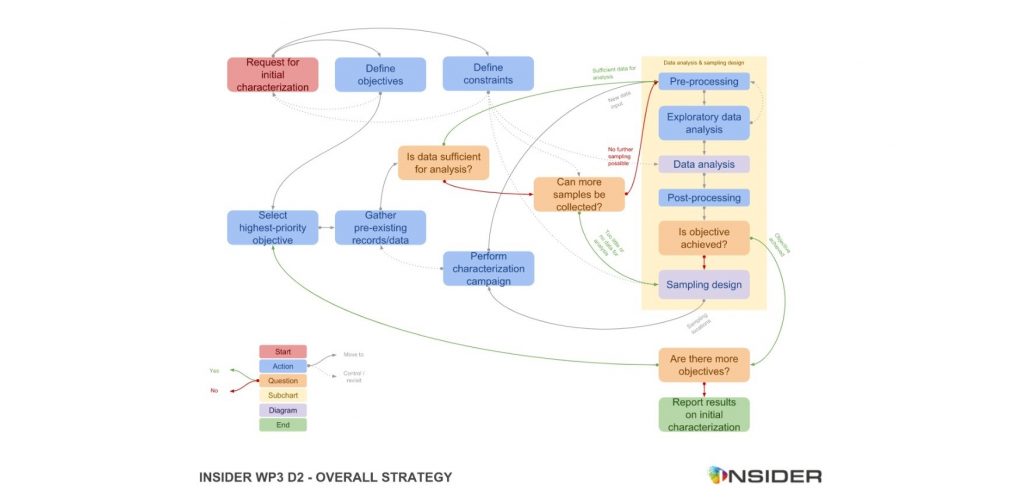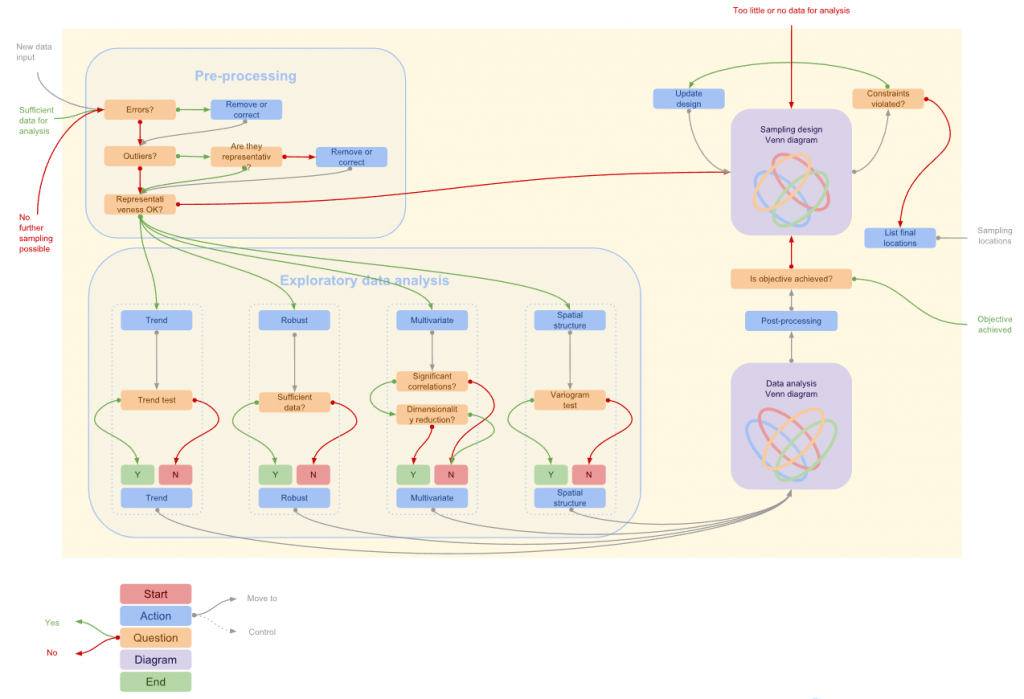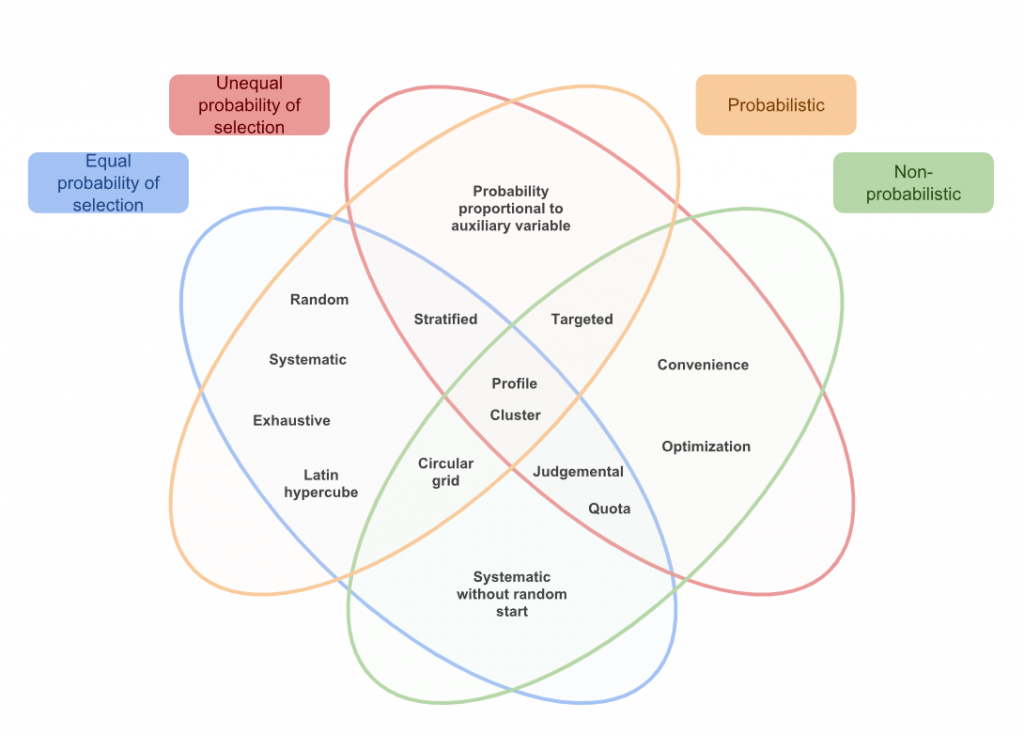Proper physical, radiological and chemical characterization of nuclear plant areas are a necessary precondition to successfully select viable dismantling methodologies and classify and segregate the different impacted (e.g., contaminated, activated) zones and materials. Acting on the upstream stage of the dismantling process is fundamental for an adequate management of all waste categories. As such, initial characterization is an essential part of the decommissioning cost estimation process.
One of the main outcomes of the INSIDER project will be a web tool named STRATEGIST (Sampling Toolbox for Radiological Assessment To Enable Geostatistical and statistical Implementation with a Smart Tactic), that is foreseen to be available online by the end of the year. STRATEGIST is a statistical approach guideline, that is transformed into a web tool, which serves as a user-friendly interactive interface. It intends to guide experts in handling the characterization problem definition and applies a strategy based on proper data analysis and sampling design. The tool promotes the application of an integrated characterization methodology and strategy in view of or during nuclear decommissioning and various types of dismantling operations (D&D). It is applicable to a broad variety of nuclear facilities and sites under constraint environments, ranging from nuclear power plants to post-accidental land remediation. The strategy applied relies on state-of-the art statistical techniques for preliminary analysis and data processing.
The upcoming launching of the STRATEGIST web tool will ensure achieving the main objective of the INSIDER project: develop and validate an improved integrated characterization methodology based on new statistical processing and modelling, coupled with present (and adapted) analytical and measurement methods, while taking into account sustainability and economic considerations.
How will STRATEGIST work?
The tool is structured using a sequence of descriptive diagrams. The overall strategy diagram (Figure 1) outlines the general steps between a request for initial characterization and reporting of the final results, after all objectives have been reached. The different steps related to the actual data analysis and sampling design are strongly dependent on the situation, the available data and the specific goals and constraints. This is represented in the diagram in Figure 2.

Figure 1: STRATEGIST: overall strategy diagram

The exploratory data analysis has been structured in a way that it is applicable to most problems in D&D for constrained environments, by looking into four aspects of the data:
- Is this a univariate or multivariate problem?
- Is this a problem involving spatial trends?
- Is this a problem involving spatial structure?
- Is this data requiring robust methods?
This only provides some guidance on the type of methods to use, and the expertise of the user of this strategy comes in at this point to make a final decision, based on the individual method descriptions, suggestions and remarks contained in the tool. This provides the expert user a certain degree of flexibility to make a final decision.
The list of methods for data analysis are organized in a Venn diagram (Figure 3) according to the four aspects of the data mentioned above. All methods mentioned on the Venn diagram are discussed separately or as part of a broader type of methods, in which case they are mentioned in the text. Clicking on the method will give the user a concise description of the method. In order to help the end user to get started, the tool provides a list of theoretical examples, software implementations, example use cases and references.

Figure 3: STRATEGIST Venn diagram listing the methods for data analysis by looking into four aspects of the data: univariate or multivariate, spatial trends, spatial structure and robust methods. All methods mentioned on the Venn diagram are discussed separately or as part of a broader type of methods, in which case they are mentioned in the text. Clicking on the method will give the user detailed information on the workflow, example of software implementations, example use cases and references.
Similar to the data analysis, the STRATEGIST web tool provides general recommendations for the sampling design approach, making a distinction between probabilistic and non-probabilistic approaches, and designs with equal or non-equal probability of selection (Figure 4).

The strategy laid down in the tool was enhanced by acquired knowledge on its implementation into four different use cases. Besides providing the comprehensive reports on those use cases, STRATEGIST will also contain a summary of the lessons learnt as well as recommendations on how to deal with uncertainties and a link to an application for the selection of in-situ measurement techniques for radiological characterization in D&D processes.
About the development of the STRATEGIST web tool
The statistical approach presented in the STRATEGIST web tool was successfully implemented in four different use cases within the INSIDER project:
- A nuclear R&D facility: radioactive liquid and sludge in tank at JRC Ispra (Italy),
- A nuclear power plant: activated bio-shield concrete of the BR3 reactor (Belgium),
- A post accidental site remediation: contaminated soils beneath a CEA building (France).
- A graphite reactor: G2 localized at the CEA site of Marcoule (France).
Detailed reports of the implementation and findings will be described in separate annexes to the guidance document and are also available in the STRATEGIST web tool.
The successful development was a result of a collective effort by the following experts: Bart Rogiers (SCK CEN), Yvon Desnoyers (Geovariances), Nadia Pérot (CEA), Gunhild von Oertzen (Brenk), Oleksandr Sevbo (Energorisk), Séverine Demeyer (LNE) and Sven Boden (SCK CEN), who also took care of the coordination.
STRATEGIST is foreseen to be available online by the end of the year.





Leave A Comment